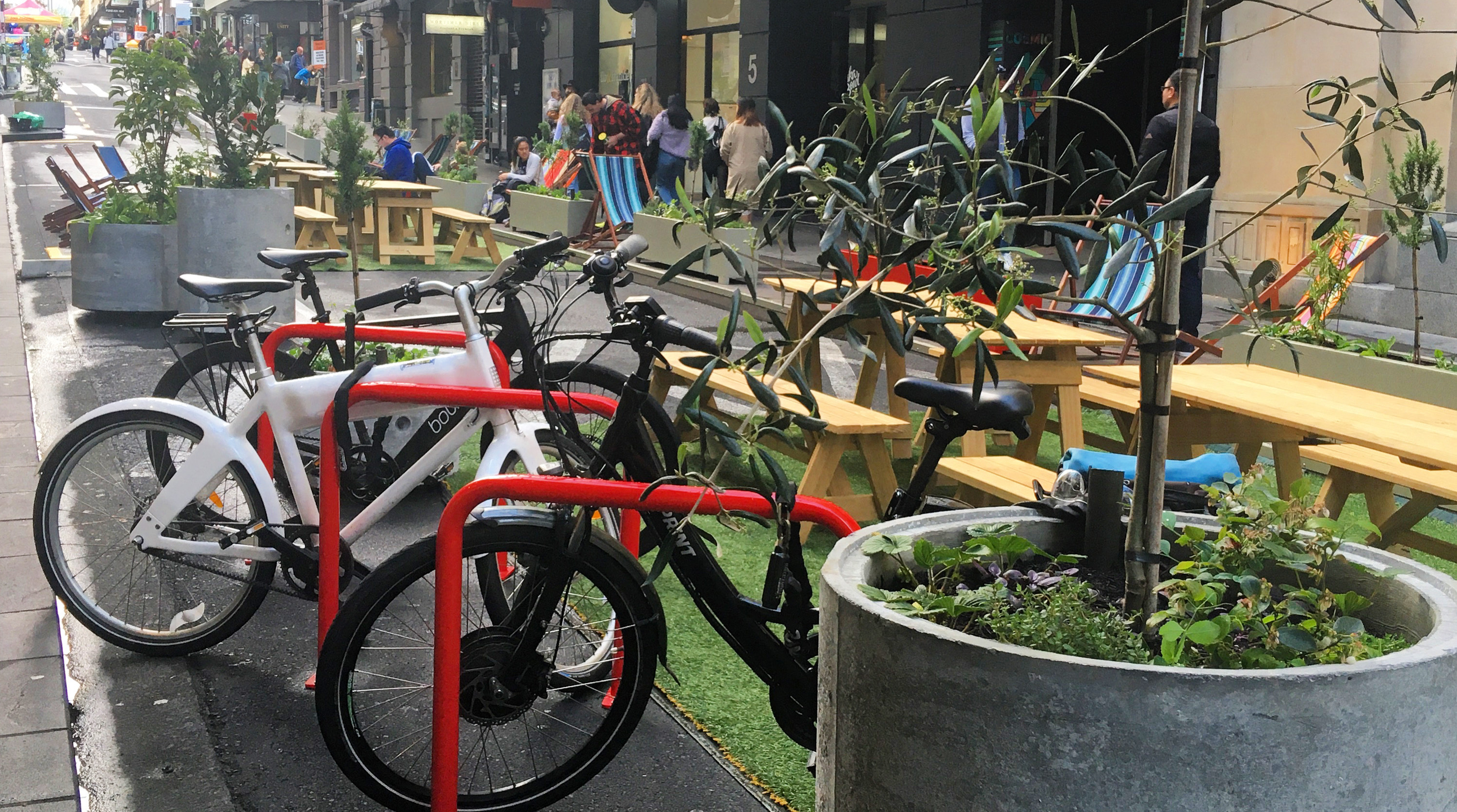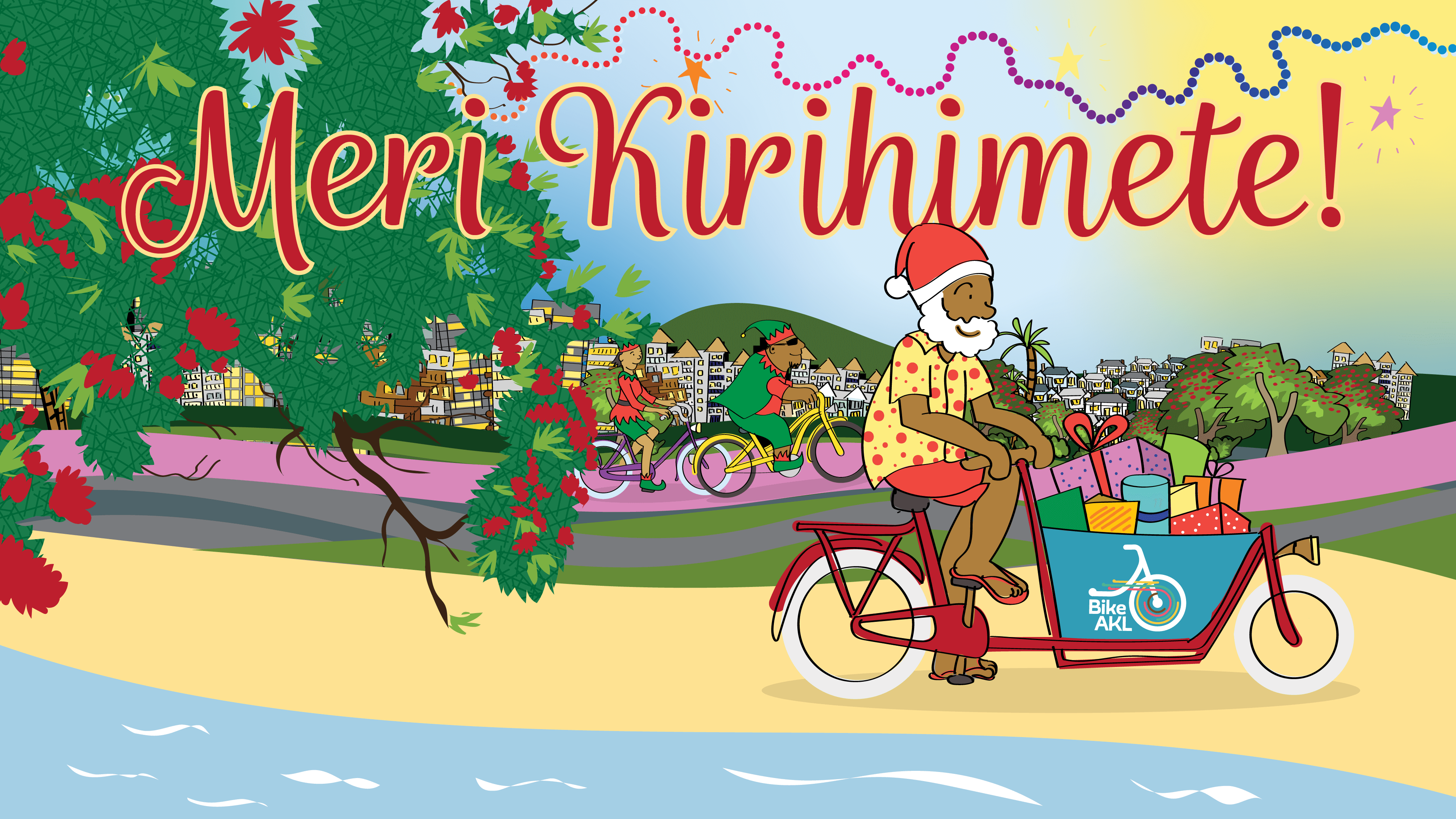Some seven years after it was first prepared, the blueprint for Auckland’s heart – the City Centre Masterplan – is getting a refresh.
NOTE: feedback closes Friday 18 October, so have your say if you haven’t already! Check out our feedback guide over here.
In the years since that 2012 plan, the city centre has grown massively in population. With resident numbers more than doubling from 24,000 to 55,000, if the City Centre were a separate entity, it would now almost be in the top 10 cities in New Zealand.
The City Centre obviously already has some advantages when it comes to bikeways. Many other parts of Auckland lacking any safe biking regard the central city enviously, and of course there a million and a half reasons to invest in safer cycling beyond the City Centre.
But with some 120,000 daily workers and a total of 200,000 visitors, it would be crazy not to continue to improve things downtown, and to spread the message of the network effect into suburbia and other centres by doing so.
But before we talk about what would we like to see in the masterplan for bikes, we wanted to look at what was proposed in the first plan back in 2012, and what actually happened…
What has been done since the LAST Masterplan?
This current consultation is about a refresh of the 2012 plan. So let’s have a – very quick – look at what was proposed for bikes then, and what actually got done:
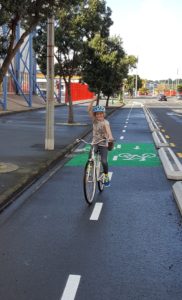
OLD Transformational Move 01 – The Harbour Edge Stitch
This combined a number of proposals to better link the waterfront from west to east. In terms of bikes, the plan wasn’t very explicit – but it suggested major, people-focused upgrades to Fanshawe Street and Quay Street.
The eastern half of this proposal partly came true for people on bikes with the interim Quay Street protected bikeway from the Ferry Terminal to The Strand. And the Beach Road Cycleway was built, bringing improvements for both walking and cycling. Also, Council are currently further upgrading Quay Street, with a full makeover from Te Wero Island to east of the Ferry Terminal – which will also reduce car volumes and speeds, something the plan had already envisaged.
The situation is not so good in the western half of this zone. Fanshawe Street still feels like a motorway right into the heart of the waterfront, and the Lower Hobson Street flyover – mooted to be removed in the 2012 Masterplan during the first 10 years – remains solidly in place. In fact, the flyover’s barrier factor is a major reason why the Nelson Street Cycleway, several years after initial opening, still hasn’t reached the waterfront, but instead peters out at Market Place.
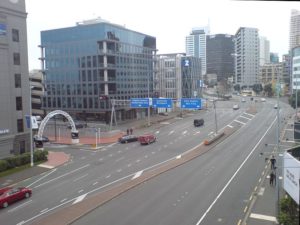
Overall, in our view this Transformational Move has been partly realised, especially once the current waterfront works are done. But action is lacking in the western half. This will become even more evident once SkyPath finally arrives, making better cycle routes from the west even more crucial until we finally upgrade Fanshawe Street to cater for all users.
OLD Transformational Move 02 – East-West Stitch
This move consisted of a number of plans to connect the western suburbs with the City Centre, as well as to improve the long-neglected “in-between” Victoria Quarter (Victoria Park and the areas to the south, between the motorway and Nelson/Hobson Street).
The move acknowledged that this area was becoming one of the most people-dense parts of all of New Zealand, with plans for many new apartments (which have indeed since appeared – and many more to come).
Plans included a linear west-east park along Victoria Street, and improvements to make Nelson Street and Hobson Street more people-friendly (planned to coincide with the opening of the new Convention Centre…).
So how did they do? Some plans have eventuated, in part – with the Nelson Street Cycleway in particular doing its bit to claw back some people space from these “traffic sewers”. But Hobson Street has not changed at all, despite the convention centre being about to open. And the Linear Park is still “in planning” some seven years later.
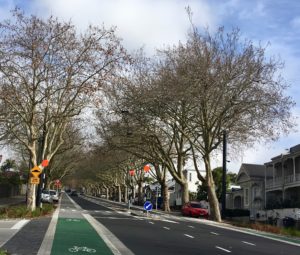
There were exciting plans a year ago for a surprise bikeway (and lots of associated pedestrian improvements) on Cook Street and Union Street – before the plan landed in business case hell, with funding still not found (apparently, road safety funding – the original intended “funding pot” for the project – cannot be used for comprehensive walk/cycleway projects like this, sigh).
In slightly better news, it looks like the Victoria Street West Cycleway, from the just-completed Franklin Road cycleway as far east as Nelson Street, will finally move to construction in the first Quarter of 2020.
In summary, this move hasn’t moved nearly as much as we’d hoped it would. However, in a year or two, especially if the Cook Street / Union Street works find funding after all, we might change our view.
OLD Transformational Move 03 – The Engine Room
This was a set of plans centred on Queen Street and the surrounding streets and lanes, from improving the laneways and back streets, to turning Queen Street into a pedestrian mall (plus light rail!).
Again, bikes were rarely mentioned, but the ideas included dialing back the amount of vehicle traffic, with measures such new shared spaces or outright vehicle access restrictions.
Progress on this has been spotty. Some great successes were indeed had, such as O’Connell Street becoming what might currently be Auckland’s best shared space, eclipsing even the success of Fort Street some years before. Nearby Freyberg Place square was a similar success, and vehicles have been removed from there, too.
But High Street is still waiting to become more than a cramped car park with some shops wedged next to it – although tactical urbanism trials are already under way.
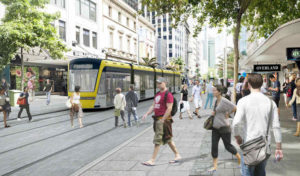
As for Queen Street – well, light rail, as we all know, has been going in circles, and is unlikely to start for some years at best. The 30kph speed limits across the whole City Centre, which would have helped so many areas become more people (and bike-) friendly, have been… slowed down, despite all the urgency they were proposed with in 2018 to deal with the road safety crisis. They may finally proceed next year.
A less visible change for the better occurred in Federal Street, where AT implemented a (relatively) fast interim project to add a partly-protected contraflow bike lane.
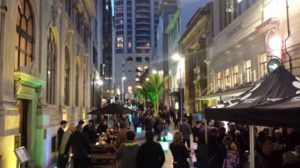
While somewhat mixed in types of facilities – due to the many different areas Federal Street passes through – the project showed that there is a middle-ground between doing nothing and doing everything with extremely expensive full road make-overs.
Overall, the successes in this move have been held back by some of the bigger projects. The uncertainty around light rail, and the delays in completing the City Rail Link (2021 in the old masterplan, but now several years out) have delayed more substantial big changes, in particular along Queen Street. For people on bikes, this part of the City Centre can still be highly hostile, for all the fact that there are oases of pleasant riding in between.
OLD Transformational Move 04 – The Learning Quarter
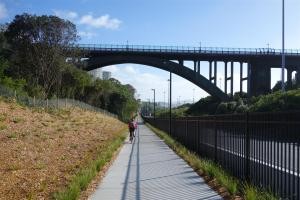
Basically, this plan involved improving the eastern part of the City Centre around the universities by prioritising people movement. Mostly, this was for pedestrians – although Grafton Gully Cycleway was mentioned, having just become a real project (it was opened in 2014).
A lot of plans for cycling improvement in the area have since been mooted, from the eastern section of the Linear Park connection across the city, to de-tuning Symonds Street further so it can be more about buses and people.
A variety of smaller improvements have occurred, but the big changes are still missing in action. Much of the university precinct is still quite restricted for access by bike, and only a part of that is due to the fact that it sits on a high ridgeline…
OLD Transformational Move 05 – City Rail Link
Obviously this one is happening, albeit with several years delay from what the old masterplan suggested. Related bike improvements weren’t really a focus of the previous masterplan.
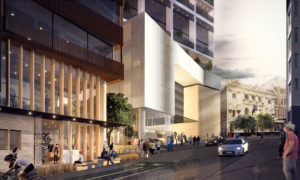
Largely due to Bike AKL’s advocacy, a number of bike improvements are on the way, e.g. a protected bikeway on Mercury Lane will link the K Road cycle lanes with Lightpath and the Northwestern Cycleway.
The biggest change will be the massive increase in pedestrians (and these days, scooters and bikes) that will come with the new train stations in the City Centre – and the development that will be spurred by and around it, bringing even more people to live and work in the city. Overall, we feel this will be a good thing, as it will strengthen the case for slower speeds and more protected cycleways (and fewer shared paths).
OLD Transformational Move 06 – The Green Link
This was probably as close as the (pedestrian-focused and high-level) Masterplan came to “a cycleway project”. While shown in the plan as a bit of a loop, including the waterfront route of Move 01, the key focus was on the Linear Park. A people-focused, car-down-tuned route linking Victoria Park in the west through the Albert Park area in the centre, then to the Auckland Domain. At the time, it included undefined cycle facilities in some form.
This project was applauded by Bike AKL, as it would create much-needed west-east links across and into the City Centre for bikes.
Since 2012, a lot has been designed and proposed for this route, which was to have been one of the big projects of the first ten years – but not much has been done. Partly, this is due to City Rail Link works in the area; partly due to concerns within Auckland Transport that reducing vehicle lanes on this route would be too negative for cars and buses.
Not even the incremental improvements suggested to start the process – better crossings, reduced car parking on the route – seems to have progressed much. Nor has much if any greenery been added.
As of 2019, another design /business case process is now underway for the Linear Park. Hopefully this will finally lead to design and implementation in the not-too-distant future. The need for cross-routes has only increased since 2012, with north-south cycling along the edges of the City Centre massively improved by the Nelson St and Grafton Gully Cycleways. When the “last mile” cross-wise to your destination remains hostile, many people will not ride.
OLD Transformational Move 07 – City to the Villages
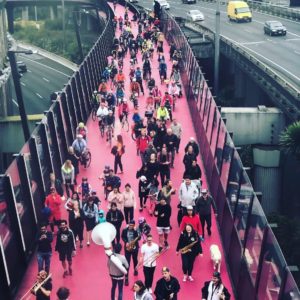
This move proposed improving walking and cycling along the gateways and entry routes into the City Centre from the surrounding suburbs.
The proposals ranged from improving various existing streets and bridges into the City Centre with more trees and greenery, to very ambitious proposals to, for example “cap” a section of Grafton Gully with a lid – a veritable “land bridge” covering the motorway mess underneath and providing a broad, generous landscaped link to the Auckland Domain.
While this last proposal remains unfulfilled (and to our knowledge, was never seriously costed or designed for), Transformational Move 07 has ended up as one of the most successful moves from a cycling perspective.
Quay Street received a beautiful bikeway on the northern side under the Pohutakawa trees. And large amounts of space for walking and cycling were found on Upper Queen Street Bridge by removing some traffic lanes and car parking (!) –although sadly, the plans for trees or a sculptural mesh screen above the bridge didn’t happen.
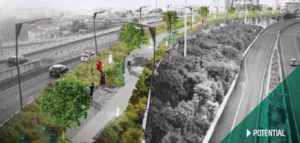
The most spectacular result from Move 07 was what was then proposed to be called “Spaghetti Verde” (!) – and which ended up being “The Pink Path” instead. The final result doesn’t have much in common with the “Highline”-inspired greenery path proposed in the 2012 Masterplan (which was, overall, very, very enthusiastic about greenery). But we can only applaud the writers of the old plan for foreseeing the importance this old off-ramp route would play in giving walking and cycling a whole new level of status in Auckland.
What an irony that it was NZTA (not Council or AT) who made the project happen when Bike AKL came to them – while also scuppering the Green Highline idea at the same time, by insisting that the ramp would need to stay free for potential vehicle traffic during a motorway emergency. This is why it couldn’t have any trees or street furniture on it – which, in turn, led to Council’s urban designers to develop the light art that follows you along the path at night, and of course, the stunning use of colour to elevate the Lightpath above the old grey ramps.
So we can certainly say that this move has been a success. Not all corridors into the city have yet been improved: looking at you, Symonds Street, barely giving pedestrians the time of day. Victoria St is still waiting for that cycleway/Linear Park. Still losing tourists to confused meandering, because there isn’t an obvious link between the City and the Domain. But overall, great strides have been made here, worth duplicating and extending on.
OLD Transformational Move 08 – Water City
This was effectively a “plan within a plan”, as it’s effectively about including the Waterfront Plan in the City Centre Masterplan. The Waterfront Plan was created by Waterfront Auckland – since reborn as Panuku, Council’s regeneration and development CCO – and covered, as one would expect, the waterfront, with a particular focus on Wynyard Quarter and Westhaven Marina.
In terms of cycling, the key move of the Waterfront Plan was the Waterfront Promenade/Waterfront Cycleway, an item that received particularly strong support when the plan was consulted.
Much of this path was eventually constructed several years ago, with a mostly board-walk structure along the marina edge from the Auckland Harbour Bridge to Beaumont Street, and a rather less-exciting shared path marked on the existing footpath from there to Wynyard’s North Wharf.
Council is currently completing the last gap in the boardwalk structure near the western end of the marina, though there are no plans known as to when the disappointing section on Beaumont Street will finally see some love.
In a way, this part of the City Centre Masterplan could be considered achieved – but expectations for bikeway quality have already surpassed it, and once SkyPath opens, it risks becoming really inadequate.
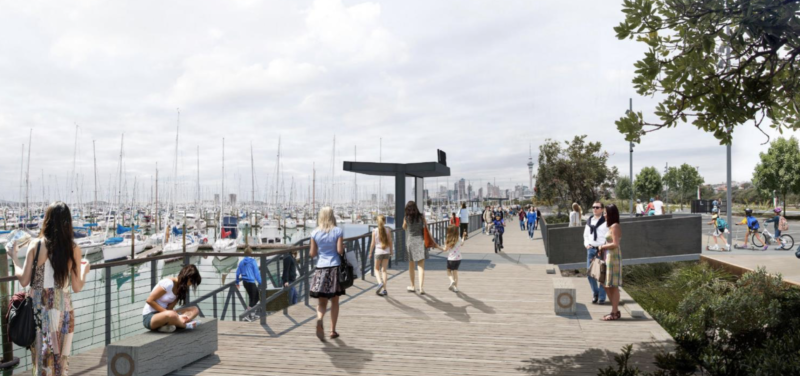
Considering all of the above, a report card on the cycling achievements over the first seven years of the City Centre Masterplan would say something like “Achieved some success, but has potential for more”. A pass – but not an excellence (except on some specific papers!).
So with one eye on the past, both the achievements and the missing progress, what does the refreshed plan suggest we should do next?
Now, hop on over to our other blog post to see what we have to say on the current consultation (closing Friday 18 October 2019!).

